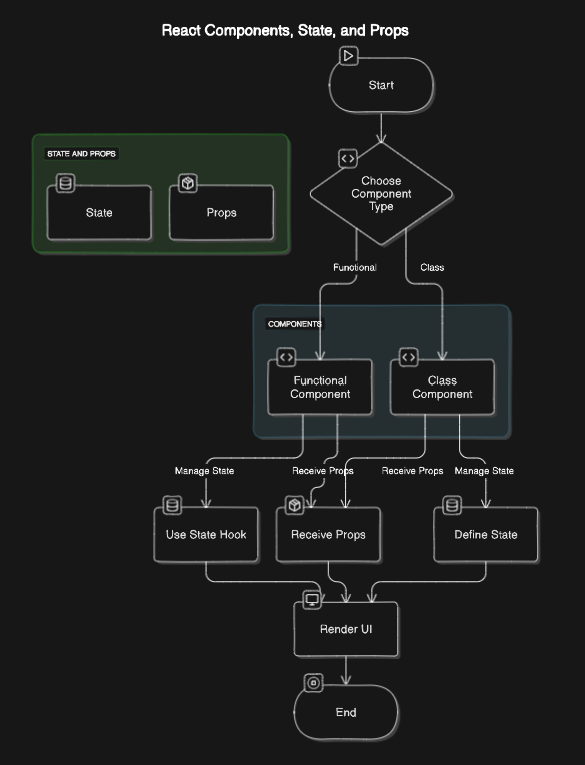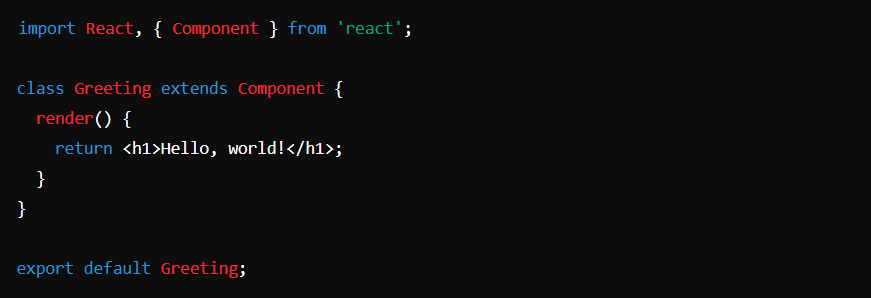React, a popular JavaScript library for building user interfaces, is all about components. Components are the building blocks of any React application, allowing you to split the UI into independent, reusable pieces. In this blog, we'll explore the different types of components in React, how to manage state and props, and how to handle events.

1. Functional Component
Function components are the simplest way to write components in React. They are JavaScript functions that return JSX (JavaScript XML).

2. Class Component
Class components are a more traditional way to define components. They are ES6 classes that extend React.Component and have a render method that returns JSX.

3. Component Lifecycle Methods (Class Components)
Class components have lifecycle methods that allow you to run code at specific times in the component's life. Here are some key lifecycle methods: